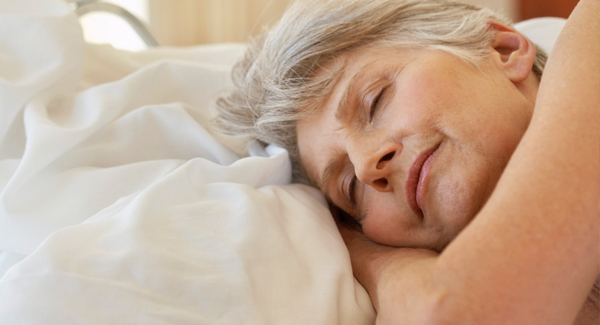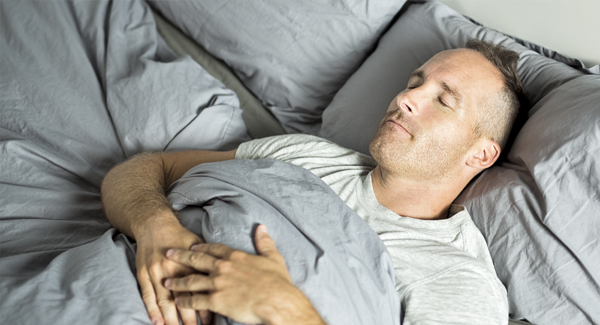Arthritis Pain and Sleep Disorders: A Vicious Cycle
Pain and sleep disorders that are common with arthritis can lead to disturbed sleep. Learn more about the connection between arthritis pain and sleep and how to sleep better.
By Linda Rath
A majority of people with arthritis — around 80% by some estimates — have trouble sleeping. They might have a tough time falling asleep, staying asleep or both. Most agree they hurt more after a bad night, creating a vicious cycle of pain and insomnia.
But many studies involving people both with and without arthritis have shown that poor sleep likely makes pain feel worse. In one study of healthy young adults, a single night of poor sleep reduced their pain threshold by 15%.
“When you don’t get enough sleep, it takes more effort to function, lowering your stress tolerance. When you have a lower tolerance, the same pain can feel greater simply because your ability to cope with it is less,” says Julia Kim, PhD, a clinical psychologist at Hospital for Special Surgery in New York City.
Researchers say this seems to happen because insomnia activates parts of the brain that are sensitive to pain and mutes the parts that are supposed to help you cope with it.
In addition, lack of sleep contributes to fatigue and makes most people grumpy, increasing muscle tension and pain, Kim points out, while restful sleep is a great pain reliever. “When we sleep, everything slows down and muscles gradually relax. This slowing down [removes] tension that can exacerbate pain. It is like the benefits of breathing and relaxation exercises or meditation. Your body can experience a reset or sense of relief when this happens.”
What Keeps You Up at Night
There’s no doubt it’s hard to sleep when you hurt, but if good sleep hygiene doesn’t help, a sleep disorder may be at the root of your tossing and turning. According to Burel Goodin, PhD, a pain researcher at the University of Alabama at Birmingham, many people are problem sleepers long before they develop arthritis. And at least one large study suggests poor sleep may even up the risk of rheumatic disease. Two sleep disorders in particular — obstructive sleep apnea (OSA) and restless legs syndrome (RLS) — are common in people with arthritis and can significantly interfere with sleep.
Obstructive Sleep Apnea
OSA interrupts your breathing during sleep, generally because your throat muscles relax and partially block your airway. Sensing you need more air, your brain wakes you up for a few seconds, usually many times an hour. You probably won’t remember these episodes, but the most common symptom — daytime sleepiness — is a sure giveaway. Other symptoms include:
- Loud snoring, which you might not notice if you sleep solo
- Waking up with a very dry throat and mouth or gasping for air
- Crankiness, trouble concentrating, forgetfulness
OSA affects more men than women and more people who are overweight or obese — conditions that often accompany osteoarthritis — than those who are a healthy weight. In severe cases, OSA can be dangerous; drowsiness can cause someone to dose off while driving, for example, and it is associated with a higher risk of cardiovascular disease, including stroke, high blood pressure and heart attacks.
Treatment usually starts with lifestyle changes. Here’s what you can do:
- Lose weight if needed — even a few pounds can make a difference
- Stop smoking
- Avoid alcohol and sleep meds, both of which relax throat tissue
- Sleep on your stomach or side, not your back
- Get your allergy symptoms under control
If these changes don’t help or your OSA is severe, your doctor may recommend a device that delivers pressurized air to help you breathe. You might know these machines by their acronyms: CPAP, VPAP, or BiPap. They work well for many people but are too noisy and cumbersome for some. Other options include mouth guards to keep your throat open and a newly approved implant that stimulates a nerve to help restore breathing.
Restless Legs Syndrome
RLS is a sleep disrupter that may be a problem for 20% to 30% of people with arthritis. It almost always flares at night, usually 30 minutes after you go to bed. People describe an irresistible urge to move their legs, accompanied by tingling, itching, burning, aching or crawling sensations. Once it occurs, the only way to get rid of the feeling is to stretch or walk it off.
To help prevent RLS:
- Get some exercise every day; yoga may be especially helpful.
- Take a warm bath or massage your legs before bed.
- Find something to distract you in the evening, like a crossword puzzle or light reading.
- Avoid alcohol, over-the-counter sleeping aids and late-day caffeine — they make RLS worse.
- Get your iron levels tested; low iron is a common cause of RLS.
- Check your meds. Corticosteroids like prednisone and prescription antidepressants can aggravate RLS.
- Be wary of prescription RLS drugs. Four are approved for the condition, but they aren’t always effective, and some can eventually make symptoms much worse.
Published 5/7/2021; Reviewed 3/28/22

Stay in the Know. Live in the Yes.
Get involved with the arthritis community. Tell us a little about yourself and, based on your interests, you’ll receive emails packed with the latest information and resources to live your best life and connect with others.


